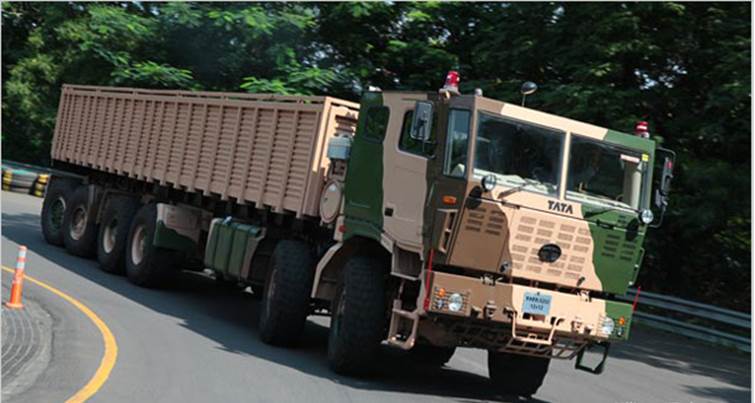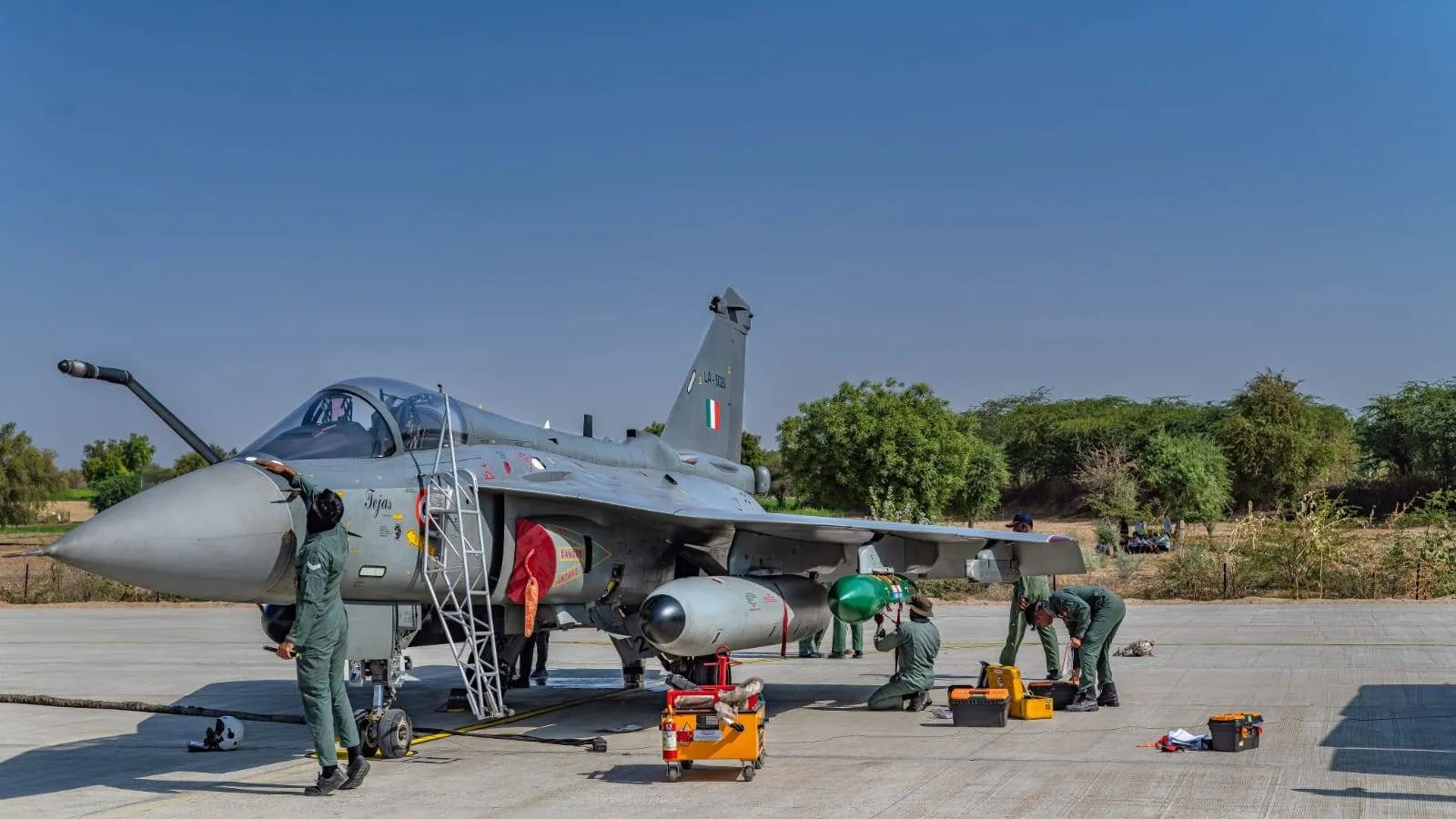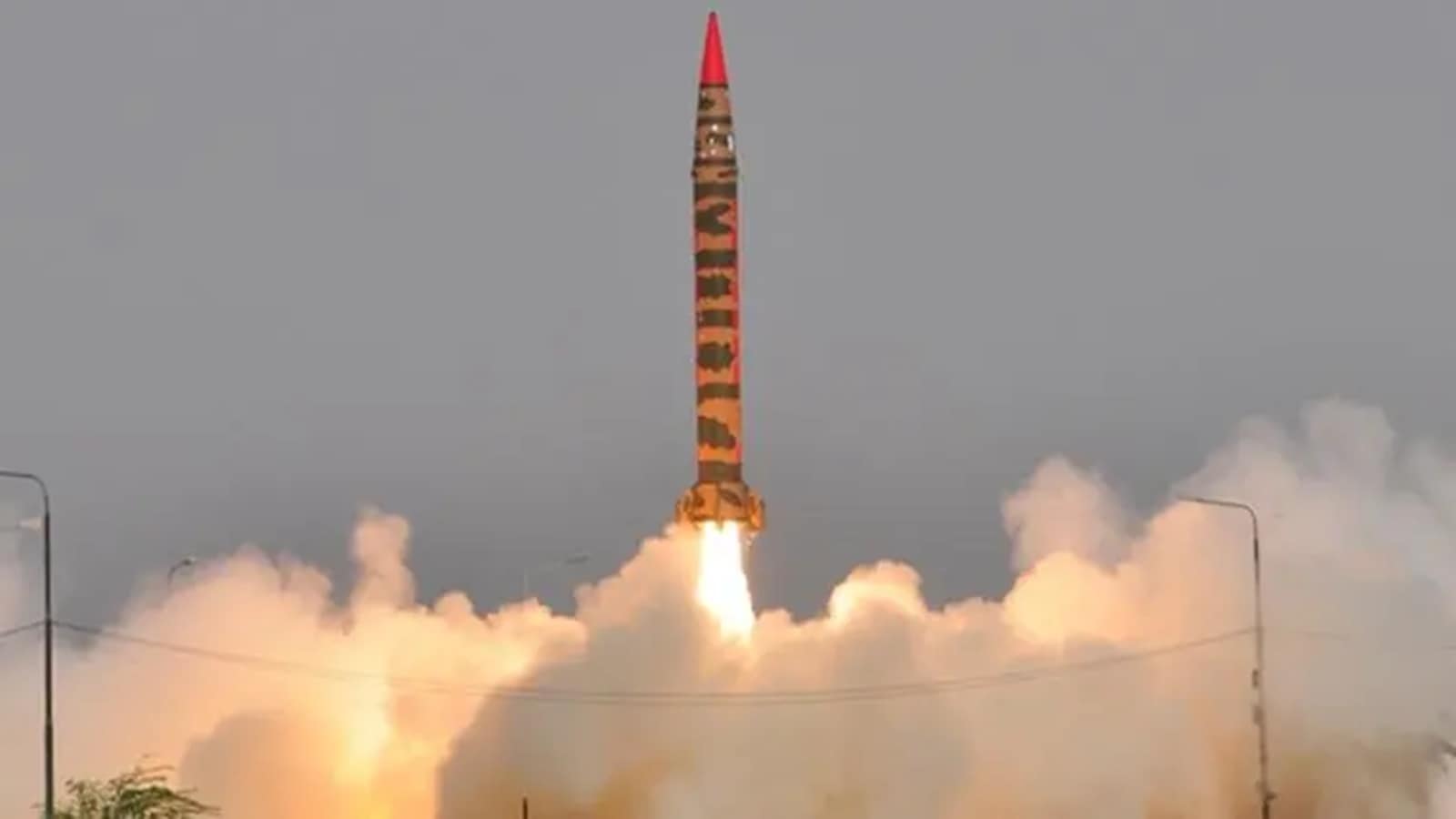SOURCE: RAUNAK KUNDE / NEWS BEAT / IDRW.ORG


The Indian Air Force (IAF) is taking proactive steps to bolster the defences of its high-value force multiplier aircraft, including Airborne Warning and Control Systems (AWACS) and in-flight refuelling tankers. These platforms are critical for extending operational range and situational awareness but are increasingly vulnerable to the evolving threat of surface-to-air missiles (SAMs), including MANPADS (man-portable air-defense systems), laser-guided threats, and radar-guided missiles.
To address these risks, the IAF is exploring the integration of advanced Airborne Missile Protection Systems (AMPS) designed to detect, verify, and counteract missile threats in real-time. Such systems would employ a combination of countermeasures, including flares, chaff, and Directional Infrared Countermeasures (DIRCM), to protect aircraft from a wide range of missile threats.
Continue readingSOURCE: AFI


The P17A Nilgiri-class frigates have set a new benchmark in naval warfare capabilities for the Indian Navy, being the first class of warships to integrate the 76/62 mm Super Rapid Gun Mount (SRGM) with the advanced Strales fire control system and Dart programmable guided ammunition. This cutting-edge weapon system significantly enhances the frigates’ ability to neutralize a variety of modern threats, including swarm UAVs and anti-ship subsonic cruise missiles.
Manufactured indigenously by Bharat Heavy Electricals Limited (BHEL) at its Haridwar plant, the upgraded 76/62 mm SRGM with Strales capability is a medium-caliber, multi-role weapon system that serves as a formidable point defense solution. Its advanced fire control system allows it to track and engage multiple targets with remarkable precision, even in complex, multi-threat scenarios.
Continue readingSOURCE: AFI


In a significant milestone for India’s defense capabilities, the Drishti-10 Starliner, the nation’s first indigenously developed Unmanned Aerial Vehicle (UAV), has become operational at the Naval Air Enclave in Porbandar, Gujarat. This state-of-the-art Medium-Altitude Long-Endurance (MALE) UAV marks a leap forward in India’s journey toward self-reliance in advanced defense technology, under the Aatmanirbhar Bharat initiative.
The Drishti-10 Starliner is modeled after the Israeli Elbit Systems’ Hermes 900, a globally recognized platform known for its versatility and endurance. While drawing inspiration from the Hermes 900, the Drishti-10 incorporates indigenous modifications to cater to the unique requirements of India’s defense forces, particularly in the challenging maritime environment of the Arabian Sea.
Continue readingSOURCE: AFI


India’s aerospace sector has reached a significant milestone with the inauguration of the Tata Aircraft Complex in Vadodara, Gujarat, by Prime Ministers Narendra Modi and Pedro Sánchez. This facility, dedicated to manufacturing C-295 tactical transport aircraft, represents a transformative step for the Indian Air Force (IAF) and the domestic aerospace industry. The project is part of a ?21,000 crore ($2.53 billion) agreement between the Indian Ministry of Defence and Airbus Defence and Space, Spain, aimed at replacing the aging Avro fleet in the IAF.
Under this deal, 57 C-295s will be supplied to the IAF, with 16 aircraft manufactured in Spain and the remaining 40 produced in India. The first Indian-assembled C-295 is expected by September 2026, with the complete fleet delivery by 2031. This factory not only enhances India’s defense production capabilities but also aims to position itself as an export hub for the C-295, should Airbus secure further international orders.
Continue readingSOURCE: AFI


By late 2026, the Indian Army is set to replace its BEML High Mobility Special Military Vehicle (HMSMV) 12×12, which is based on the TATRA Heavy Mobility Vehicle (HMV), with locally produced alternatives. This strategic shift underscores India’s commitment to bolstering its indigenous defense manufacturing capabilities and reducing reliance on foreign technology.
The BEML-TATRA 12×12 HMSMV is a highly specialized vehicle currently in service with the Indian Army, known for its robustness and versatility. Designed to handle payloads up to 42 tons, this vehicle features a clear platform length of 13 meters, ideal for transporting long loads. Its automatic transmission system enhances its operational efficiency, particularly in cross-country scenarios where maneuverability and power are crucial. The vehicle has been a cornerstone for logistics, especially in transporting heavy military equipment across challenging terrains.
Continue readingSOURCE: AFI


In a devastating maritime incident, fourteen lives were lost when an Indian Navy speedboat, undergoing engine trials, collided with a civilian ferry in Mumbai Harbour, leading to the capsizing of the vessel carrying over 100 passengers. This accident not only underscores the need for stringent safety measures but also brings to light the broader issue of congestion in one of India’s busiest maritime corridors.
The collision occurred in the evening off the Mumbai coast, near Karanja, when the speedboat, which had recently undergone an engine replacement, lost control due to an engine malfunction. The ferry, en route to the Elephanta Caves from the Gateway of India, was overwhelmed by the impact, leading to its capsizing. Immediate rescue operations by the Navy, Coast Guard, and Marine Police managed to save 101 individuals, but the tragedy has sparked a significant debate on naval operations in Mumbai.
Continue readingSOURCE: IDRW.ORG

The Indian Navy’s vision for its Next Generation Missile Vessels (NGMVs) is attracting international attention, according to idrw.org. These warships, designed to replace older corvettes, boast a potent combination of compact size and fearsome firepower.
Armed with four BrahMos supersonic cruise missiles, the NGMVs pack a serious punch. These highly advanced missiles offer long-range, high-speed attack capabilities. Smaller nations seeking powerful warships are expressing interest in the NGMVs. This design fills a niche for countries desiring a balance between size and firepower.
SOURCE: IDRW.ORG


The Indian Army has expressed a strong interest in expanding its fleet of Toyota Hilux pickups after a successful initial integration in 2023. Toyota Kirloskar Motor (TKM) delivered the first batch of these rugged vehicles to the Army, which underwent a comprehensive two-month evaluation by the Northern Command.
The Hilux, known for its legendary durability and off-road prowess, was tested under some of the harshest conditions India has to offer, from altitudes reaching 13,000 feet to the frigid temperatures of high-altitude regions. The vehicle’s performance in these extreme environments has paved the way for further procurement considerations.
Continue readingSOURCE: AFI


In a significant stride towards bolstering India’s indigenous defense capabilities, state-run aircraft manufacturer Hindustan Aeronautics Limited (HAL) is gearing up to deliver the first upgraded Tejas Mk1A aircraft to the Indian Air Force (IAF) around March 2025. This delivery comes approximately 13 months after the aircraft’s initial flight with its enhanced avionics and systems.
The Tejas Mk1A has undergone rigorous testing and refinement since its maiden flight with the new systems, including resolving initial teething issues with the ELM 2052 Active Electronically Scanned Array (AESA) Fire Control Radar (FCR). HAL officials have confirmed that these issues have been addressed, ensuring the radar’s reliability and performance. Additionally, the aircraft has been equipped with software upgrades requested by the IAF, further enhancing its operational capabilities.
Continue readingSOURCE: AFI


In a significant move towards international collaboration in advanced military technology, the United Kingdom and Italy have expressed their support for inviting India to join the development of a sixth-generation fighter jet under the Global Combat Air Programme (GCAP). This initiative, which already includes Japan, aims to create a next-generation stealth fighter by 2035.
Two years ago, the UK extended an initial invitation to India to participate in the Tempest Project, a precursor to the current GCAP. Now, with Italy also showing enthusiasm, the prospect of India’s involvement has gained new momentum. Italy’s interest in bringing India on board aligns with the broader strategy of expanding the partnership to share the enormous costs associated with such cutting-edge technology development.
Continue readingSOURCE: AFI


The recent docking of INS Tushil (F70), a Russian-built warship now serving under the Indian Navy, near the iconic London Bridge, has stirred a noticeable reaction among Britons. This multi-role stealth guided missile frigate, on its maiden operational deployment, made its first port call in London, an event that caught the attention and raised questions regarding the geopolitical implications of such a visit.
The sight of INS Tushil, with its distinctly Russian design and origins, in the heart of the UK capital, led to a mix of surprise and caution among the public. Many expressed their astonishment on social media platforms, with posts like, “Seeing a Russian-built warship in London feels surreal” and “Even if it’s part of the Indian Navy, we need to be careful.” These sentiments reflect not only the surprise but also an underlying concern about security and the complex international relations involving Russia.
Continue readingSOURCE: AFI


In a recent diplomatic maneuver, Pakistan has reportedly approached the United States with a proposition aimed at de-escalating regional tensions through missile program controls. According to posts found on X, Pakistan has offered to halt its own missile development in exchange for the U.S. persuading India to do the same.
Pakistan’s proposal suggests a mutual cessation of missile development programs between India and Pakistan, with the United States acting as a mediator or facilitator. This would theoretically result in a reduction of offensive capabilities on both sides, potentially stabilizing the region.
Continue readingSOURCE: AFI


The landscape of counter-drone technology in India has undergone a dramatic transformation over the past five years. When the Indian Army first began acquiring anti-drone guns, the cost per unit was prohibitively high at around ?50 lakh, with very limited suppliers in the market. Today, the scenario has changed significantly, with dozens of Indian manufacturers offering advanced solutions at prices as low as ?8 lakh per unit.
Five years ago, counter-drone systems were a niche technology. Most suppliers in India were either reliant on imported systems or functioned as assemblers, assembling components sourced from abroad with minimal local value addition.
Continue readingSOURCE: RAUNAK KUNDE / NEWS BEAT / IDRW.ORG


Brazil is showing significant interest in the BrahMos-NG (Next Generation) supersonic cruise missile, an advanced weapon system jointly developed by India and Russia. Designed to deliver Mach 3 speeds while maintaining a compact size, the BrahMos-NG is being viewed as a potential armament for Brazil’s Gripen-E fighter fleet. This missile, still under development by BrahMos Aerospace, is attracting international attention due to its unique combination of speed, size, and versatility.
The BrahMos-NG is a miniaturized version of the highly successful BrahMos supersonic cruise missile. Weighing just 1.3 tons, it is comparable in size to many subsonic cruise missiles, yet capable of travelling at three times the speed of sound (Mach 3). This combination offers a significant operational advantage.
Continue readingSOURCE: RAUNAK KUNDE / NEWS BEAT / IDRW.ORG


India’s plans to increase the indigenous content in the AL-31FP aero engines, which power the Su-30MKI fighter jets, have hit a roadblock as Russia has expressed reluctance to approve further localization efforts. These engines are produced under license by Hindustan Aeronautics Limited (HAL) at its Koraput division, with the current indigenous content standing at less than 54%. HAL aims to increase this to 63% in the coming years, but challenges surrounding intellectual property and raw material sourcing have complicated the process.
Under the original transfer of technology (ToT) agreement, HAL is required to source raw materials for the production of AL-31FP engines exclusively from Russia. This restriction limits HAL’s ability to substitute components with locally manufactured parts or use Indian alloys without Russian approval. While HAL and the Gas Turbine Research Establishment (GTRE) have developed plans to replace certain assemblies and sub-assemblies with locally produced equivalents, Russia has warned that such modifications would void the engines’ warranty.
Continue reading